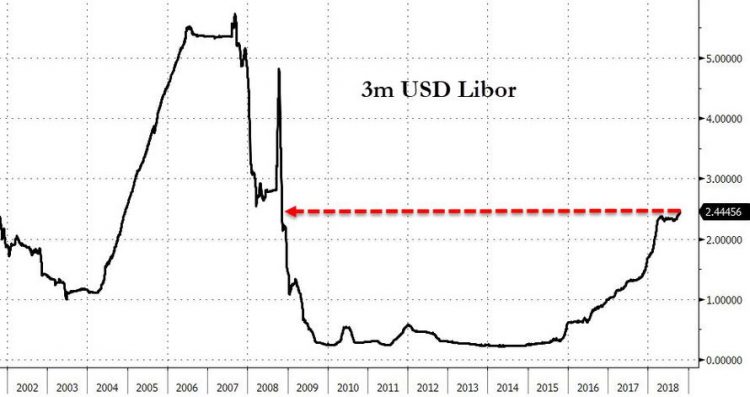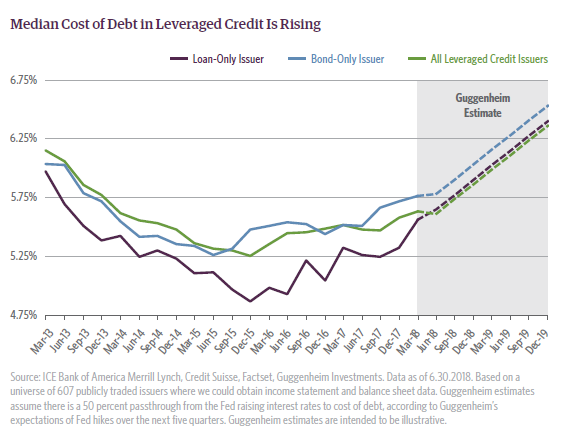
It may be the bete noir of the credit market, but despite the gradual phase out of the infamous manipulated benchmark, Libor remains the reference rate for trillions in floating rate debt instruments, and in a further indication that monetary conditions are tightening aggressively and that funding headwinds are rising, overnight 3M USD Libor rose by 1.94bps to 2.4690% – the biggest one day jump since the end of May – and the highest USD Libor level since 2008.

While some attribute the recent move higher in Libor to recent hawkish rhetoric from Powell, with the latest move following the Fed’s minutes, today’s move has also pushed the dollar FRA/OIS spread wider by 3bps to 33.5bp level, highest since July, a hint that a fresh dollar shortage may be in the offing.

As Bloomberg’s Sunil Keser notes, while compared to the Libor-OIS blowout observed in Q1, the recent move looks tame, it serves to underscore how sharp the dollar repatriation was in the first few months of 2018. Meanwhile, “the widening since mid-September is enough on its own to warrant flagging, given the outright level of the current Libor fixing.”
As to whether it can go further depends on where the Fed judges the neutral rate to be, and how far above it they are willing to go.
The creeping rise of cost of debt, most broadly manifested by Libor, was recently flagged by Guggenheim as one of the key risks for the credit market, noting that for the broader leveraged credit market the cost of debt troughed at 5.3% in 2015 and was recently 5.6%, prompting a warning that “this trend is somewhat overlooked by investors who focus on narrowing spreads over Treasurys or LIbor, historically low portfolio yields and exception earnings growth.”

Meanwhile, the move wider in Libor has also affected the short-end, with the 2Y yield moving higher after paring losses that were led by front end of the curve, eroding some of the bear steepening that followed release of FOMC minutes Wednesday.
















